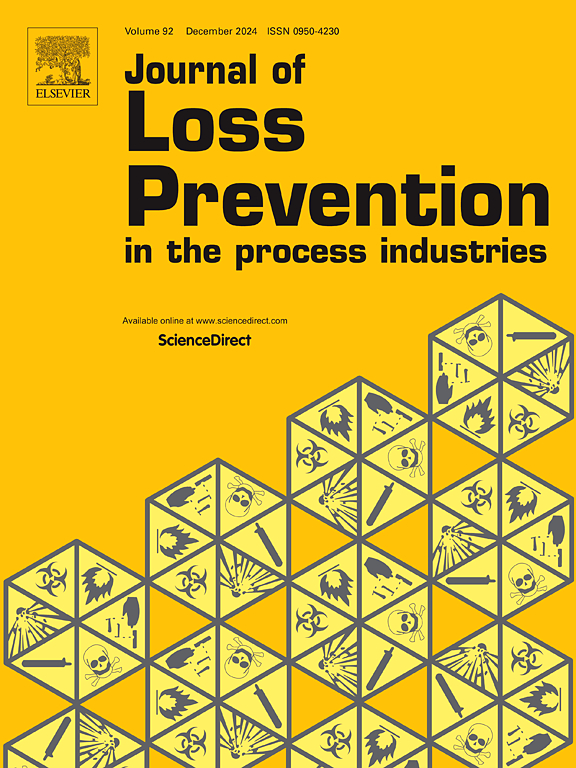An improved FMEA approach based on interval-valued spherical fuzzy sets and CODAS method for LNG tank safety analysis
IF 3.6
3区 工程技术
Q2 ENGINEERING, CHEMICAL
Journal of Loss Prevention in The Process Industries
Pub Date : 2025-05-15
DOI:10.1016/j.jlp.2025.105679
引用次数: 0
Abstract
The demand for liquefied natural gas (LNG) as an efficient energy source is increasing. Still, its poor pressure resistance makes it prone to hazardous accidents and requires suitable risk assessment methods to identify storage leakage risk. Failure mode and effects analysis (FMEA) is used as an important risk analysis tool to assess the failure modes of tank systems, but the traditional method has the potential to lead to inaccurate evaluation results. This paper proposes an improved FMEA approach based on the interval-valued spherical fuzzy set (IVSFS) and combinative distance-based assessment (CODAS) method for assessing storage safety. The CODAS method determines the risk prioritization, and expert linguistic evaluations are expressed by IVSFSs, which reduces the ambiguity of the evaluation information. The subjective and objective weights of risk factors are obtained by the extended level-based weight assessment (LBWA) and removal effects of criteria (MEREC) methods with IVSFS, respectively, which aggregate into synthetic weights. A new score function for IVSFS is proposed to improve discriminative power and simplify the calculation process. To clearly describe the specific implementation, the method was applied to assess the leakage risk of storage tanks at an LNG receiving terminal in China. The result illustrates that the highest level of risk is the appurtenant pipeline rupture, while the design defect is the lowest level of risk. The sensitivity analyses validated the flexibility of managing uncertain and complex expert assessments. Kendall's rank correlation coefficients and comparative analysis validated the feasibility and high discriminatory power of this approach.
基于区间值球面模糊集和CODAS方法的LNG储罐安全分析改进FMEA方法
作为一种高效能源,对液化天然气(LNG)的需求日益增加。但其耐压性差,容易发生危险事故,需要合适的风险评估方法来识别储存泄漏风险。失效模式与影响分析(FMEA)是评价储罐系统失效模式的重要风险分析工具,但传统方法存在评估结果不准确的问题。本文提出了一种基于区间值球面模糊集(IVSFS)和基于距离的组合评价(CODAS)方法的改进FMEA方法,用于存储安全评价。CODAS方法确定风险优先级,专家语言评价用IVSFSs表达,减少了评价信息的模糊性。危险因素的主观和客观权重分别由扩展的基于水平的权重评价(LBWA)和标准去除效果(MEREC)方法与IVSFS结合得到,并汇总成综合权重。提出了一种新的IVSFS评分函数,提高了判别能力,简化了计算过程。为了清晰地描述具体实施情况,应用该方法对中国某LNG接收站储罐的泄漏风险进行了评估。结果表明,最高风险级别是附属管道破裂,而设计缺陷是最低风险级别。敏感性分析验证了管理不确定和复杂专家评估的灵活性。Kendall的等级相关系数和比较分析验证了该方法的可行性和较高的区分力。
本文章由计算机程序翻译,如有差异,请以英文原文为准。
求助全文
约1分钟内获得全文
求助全文
来源期刊
CiteScore
7.20
自引率
14.30%
发文量
226
审稿时长
52 days
期刊介绍:
The broad scope of the journal is process safety. Process safety is defined as the prevention and mitigation of process-related injuries and damage arising from process incidents involving fire, explosion and toxic release. Such undesired events occur in the process industries during the use, storage, manufacture, handling, and transportation of highly hazardous chemicals.

 求助内容:
求助内容: 应助结果提醒方式:
应助结果提醒方式:


